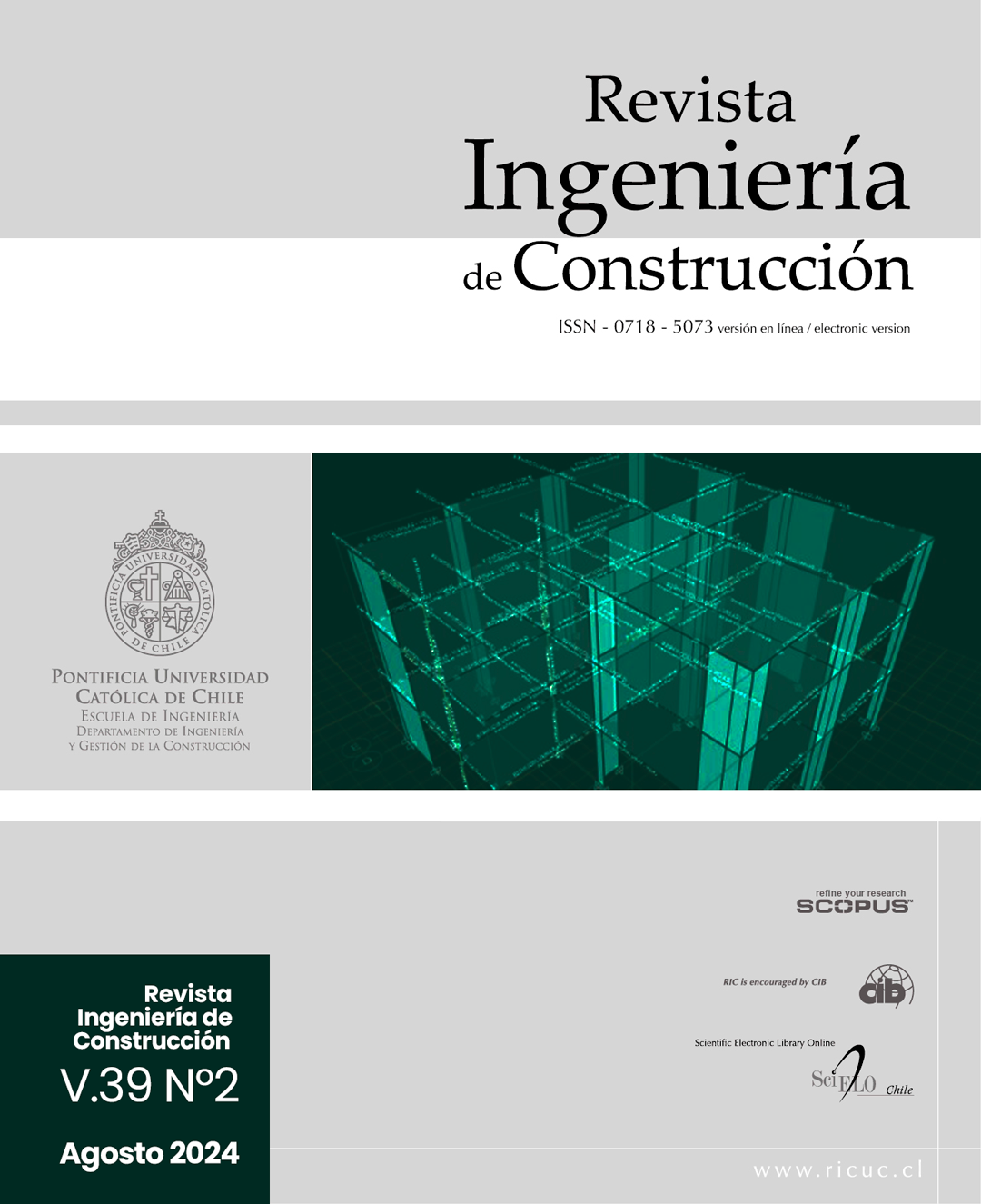Brick dust and fly ash as subgrade stabilizer for Low Traffic Volume Roads: laboratory and test track evaluation
DOI:
https://doi.org/10.7764/RIC.00110.21Keywords:
soil Stabilization, brick dust, geopolymers, low traffic volume roads, performanceAbstract
Currently, there are materials from industry that, under certain physical conditions, can contribute to the improvement of soils mechanical properties. Materials such as brick dust (BD) and fly ash (FA) have high SiO2 and Al2O3 contents, which denote pozzolanic activity. In addition, it has been shown that these materials can be activated when combined with lime. This generates internal cementation processes when the particle size is 0.075 mm. Rural roads in Colombia have one of the highest percentages of the entire road infrastructure, and only about 7% are in good condition. Difficult access conditions, soil susceptibility, the financial impossibility of intervening in this entire network and the need to implement circular economy processes, make these materials attractive in terms of stabilization to improve traffic conditions. BD and FA were applied in dosages of 0%, 3%, 6%, 9%, 12% and 24% in finogranular soils (silt and clay) and sandy soils, compaction was evaluated, and a factorial experimental design was carried out to evaluate the influence of the material on the variable unconfined compressive strength (UCS), through an ANOVA analysis. To evaluate the performance of BD and FA, a test track was made on a low traffic volume road in northern Colombia, which had a sandy soil. BD and FA were added at 12% and activated with lime, in 30 m long cells. To establish a comparative pattern, other cells were made in the same geometric conditions with materials that are usually used in this type of application, such as cement. These cells were evaluated over a period of 16 months. Characteristics such as resilient modulus, international roughness index (IRI) and slip resistance coefficient were measured during this period. The results indicate that when these materials are added to finogranular soils (silts and clays), the UCS increases by 150% with respect to the unstabilized soil, while for sandy soils the strength increases from 70% to 125%. During the evaluation period, the BD and the FA were able to increases of over 50% in the resilient modulus with respect to the unstabilized soil. However, the FA showed comparable results with respect to the cement-stabilized cell. In addition, although the sections deteriorated over time, they maintained their roughness index within the admissible ranges indicative of a good serviceability index.
Downloads
Downloads
Published
How to Cite
Issue
Section
License
Copyright (c) 2024

This work is licensed under a Creative Commons Attribution 4.0 International License.

